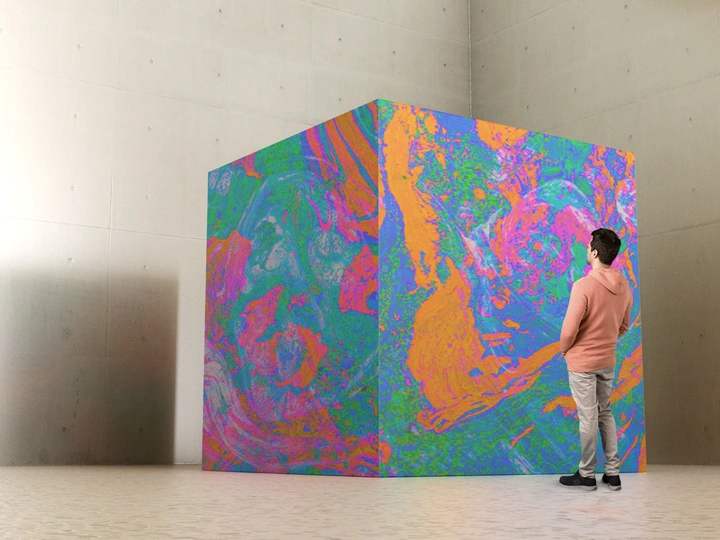Cubo Chrome

Nelson Ferreira
Diogo Riberio
Nelson Ferreira is a professional painter specialised in 15th century Primitive Flemish methodologies of Painting, as well as 19th century Academic drawing and painting techniques. He is a visiting lecturer at many museum and the arts universities worldwide of which to name the few (UK, USA & Canada - National Portrait Gallery, Saatchi Gallery, V&A Museum, Paramount Pictures, Discovery Channel, Walt Disney, Bank of America) amongst many others. He is interested in all classical and contemporary in its sense of art expression.
His artworks are collected worldwide, with a special focus in Britain, Japan and the Middle East. He was invited in 2022 to be the first artist in residence at the sculpture garden of Portugal's National Museum of Contemporary Art - the world's first national Museum of Contemporary Art (since 1911).
In 2022/2023 Nelson had solo exhibitions at Lisbon's national museum of contemporary art, the monastery of Batalha, and Soares dos Reis museum in Porto.
Korana Celan is a mixed media decorative visual artist and muralist specialised in set painting and decorations for scenic film,TV & theatre construction industry. Her artistic visions are of the broad spectrum and she enjoys provoking and tackling human sensors and society norms. She's worked across a range of many projects, from conceptual art to complex creative interior projects in Europe, UK & the USA. She has collaborated and exhibited over the years in numerous galleries across UK ( White Chapel Gallery, Spitalfields Studios, The Minories Gallery, The Transition, Elektrowerkz Venue ) Malta - Chamber of Fashion, Croatia - Art Festival Opuzen.
Diogo Ribeiro is a multidisciplinary designer and maker interested in exploring human interaction and creates immersive "augmented reality".He's creative visions are reflected in workshops that he organises on emphasising on sustainable making and promoting a circular economy by using waste as source material.
Visual artists Nelson Ferreira and Korana Celan aren’t unknown to the art world and their passion for artistic expression has been evidently recognised over the years. Their second collaboration is all about an immersive installation. It underlines the translatability between the two artistic domains of visuals and sound, showcasing the importance of energy saving and environmental awareness. The study has been accompanied by their colleague designer Diogo Ribeiro, whose novel approach has created new patterns based on musical scores.
Using a diagonal which conveys syncopated sensations, this installation translates music to the thermochromic colour throughout fabrics. This creates a visually remarkable connection to human senses and their reflection.
This brings us to the connection of Cubo Chrome installation and the thermochromic paints in architecture. Global warming, caused primarily by human-induced pollution, poses significant challenges to the design and construction of buildings. This had led to increased energy consumption for cooling, compromised structural integrity, and compromised thermal comfort. Studies in Porto, Madrid and Abu Dhabi have demonstrated energy reductions up to 11.0°C, during the summertime, and an increase of up to 2.7 °C during the wintertime. These results point out the great benefits of using optimally selected thermochromic paints in architectural building settings for obtaining ability to regulate heat. This offers a promising solution to address energy use. Thermochromic paints contain thermochromic pigments that reversibly change colour and transparency according to surface temperature variations which can create striking and dynamic visual expressions.
With necessary further studies, we would like to embrace the importance which would offer a small window onto possible solutions emphasising on the value and importance of energy saving as well as help to reduce ecological footprints created by humankind.